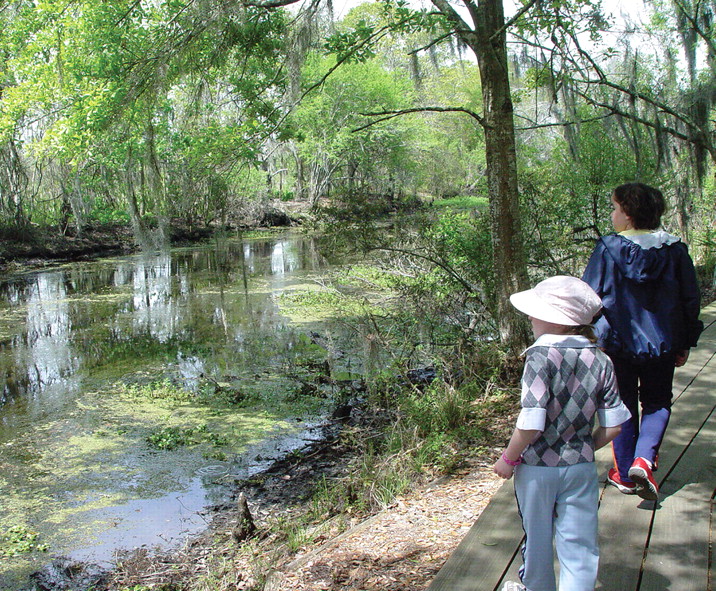Cajun Country Journey Reveals Region's Unique Culture, History
Abstract
The man for whom Jean Lafitte National Historical Park and Preserve was named when it was established in 1978 is as mysterious as the murky and vast swamplands that characterize one of its six sites, the Barataria Preserve.
Known by some as the “Gentleman Pirate of New Orleans” and others as the “Terror of the Gulf,” Lafitte preferred to be known as a privateer and not a pirate—he never plundered an American ship—yet he organized a crew of fishermen to smuggle goods into the Mississippi Delta region, including linens, furniture, spices, and trinkets, during the early 1800s.
At the time, the delta was abundant in wildlife. To this day, much of the area's natural beauty and cultural traditions have been preserved through the national park's six sites.
The Barataria Preserve is located in Marrero, about a half hour south of New Orleans, and borders the Bayou des Families. The preserve protects 20,000 acres of bayous, swamps, marshes, and dense forests of cypress and mangrove trees. Natural inhabitants of the preserve include alligators, armadillos, and more than 300 species of birds. Visitors can explore the preserve on land by traversing the preserve's many trails and boardwalks or the waterways via canoes and kayaks.

Visitors walking along the marsh trail, which rises above the swamps, are treated to spectacular views of the marsh wildlife in the Barataria Preserve.
The preserve's visitor center features exhibits about Louisiana's wetlands and the humans and animals who have inhabited the area for centuries, and there are ranger-guided walks daily at 10 a.m. and 2 p.m.
Just six miles down river from New Orleans in Chalmette is the Chalmette Battlefield and National Cemetery, site of the 1815 Battle of New Orleans. The cemetery is the final resting place for more than 15,000 troops who fought in the Civil War, the Spanish-American War, World Wars I and II, and the Vietnam War.
On the grounds of the battlefield stands the Chalmette Monument, which pays tribute to General Andrew Jackson and the men under his command in the Battle of New Orleans.
The historic Malus-Beauregard House, built in the 1830s and named for its first and last owners, also stands on the battlefield grounds. The mansion is a stately example of French architecture and served as the country home for a number of wealthy families in the 19th century.
At the French Quarter Visitor Center, located on Decatur Street in the heart of the French Quarter, visitors can learn about the history of the city. Each day, park rangers offer a free walking tour through the French Quarter at 9:30 a.m. The rangers distribute 25 free tickets beginning at 9 a.m., and tours last about an hour.
People who want to strike out on their own can stop by the visitor's center and pick up a map of a self-guided walking tour and a guide of historic homes and museums in the French Quarter.
Three of the park's six sites are dedicated to educating the public about Cajun culture and history.
The Acadian Cultural Center features educational ranger programs, films, exhibits, storytelling, dance, and food to inform visitors about the traditions of the Acadians, or Cajuns, who have inhabited the prairies, bayous, and marshes of Southern Louisiana for centuries. The center is located in Lafayette, about 25 minutes south of New Orleans by car. Each day at 2:45 p.m., rangers give free talks on the history and culture of the area.
Saturdays are a good day to visit the Prairie Acadian Cultural Center in Eunice. On exhibit are old photographs and artifacts of Cajun people over the years. On Saturdays at 3 p.m., the center offers free Cajun music and dancing as a zydeco band performs. There are also free cooking demonstrations each Saturday at 4 p.m. in which rangers and volunteers share their recipes for seafood gumbo and etoufee, for instance.
The public can also learn more about Cajun history and culture at the Wetlands Acadian Cultural Center in Thibodaux, located about 45 minutes west of New Orleans. Exhibits showcase Cajun furniture and clothing. Mondays at 5:30 p.m., there is a free delta-music jam at which visitors can sit in on blues, zydeco, country, gospel, jazz, and Cajun performances.
Information about the six sites of the Jean Lafitte National Park and Preserve, including hours of operation and phone numbers, is posted at <www.nps.gov/jela/index.htm>. Admission to all sites is free.



